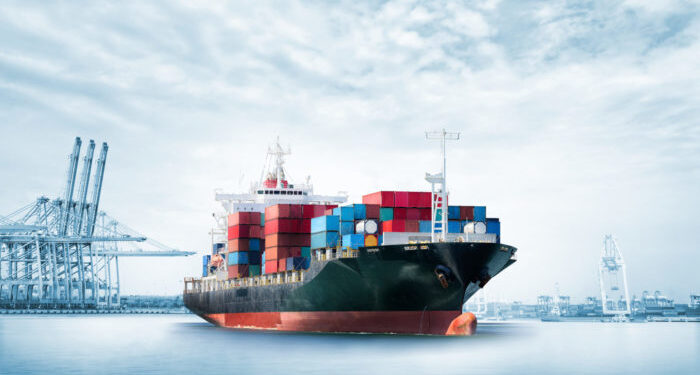During April, container shipping spot freight rates on the back-haul trade from North Europe to China were higher than those on the front-haul trade from China to North Europe, BIMCO reports.
According to Peter Sand, BIMCO’s Chief Shipping Analyst, this is a rare occurrence that has developed due to the Covid-19 outbreak.
A reversal of front-haul and back-haul spot freight rates is a rare event. Especially on a high-volume main trade route like the Far East to Europe, which normally holds a 2:1 ratio
Capacity has been cut fast by all carriers to better fit the declining demand for containers out of China. However, much improved utilisation on the Europe to China back-haul trade has put carriers in a position to command higher spot rates.
April was unique in that way, Mr. Sand says, and the phenomenon is gone for now. Spot rates out of the main China ports are fixed at $1,453 per FEU heading for North Europe discharge, against $1,356 per FEU for containers going east on 19 May.
On most main container trade routes, there is a ‘mismatch’ between loaded container volumes. Namely, on the Far East to Europe trade, that ‘mismatch’ is 100%. Under normal market conditions, carriers deploy capacity to match demand on the front-haul of the trade, where the payload is highest.
What is more, February was a turning point for the spot freight rates as volumes ended almost on par for that month, as 634,000 TEU went east and 690,000 went west. Nevertheless, the relative strength made all the difference. While eastbound back-haul volumes from Europe to Far East increased by 1%, front-haul volumes fell by 32%.
Carriers announce General Rate Increases (GRIs) or specific surcharges in the lead-up to starting many new months. On contrary to last year, the relatively higher back-haul volumes made Peak Season Surcharge (PSS) on the North Europe to Far East Trade sticky in 2020. The pendulum that swung negotiation power from shippers to carriers was repeated in April, lifting back-haul spot rates even further and above the sliding front-haul spot rates.
Data on moved volumes for April and May are currently pending, but they are possible to pinpoint these developments.
Blanked sailings on the front-haul trade out of Far East towards Europe during week 20 (11-17 May) are estimated to have reached 28% of total trade lane capacity. May is likely to see a rise in blanked capacity.
For the upcoming weeks, to end-July, carriers are expecting higher cargo volumes on the front-haul, in spite the seasonally lower nature of May-July. Blanked capacity currently announced account to 12% of overall trade lane capacity, as fewer sailings are blanked and fewer were initially planned for.






























































